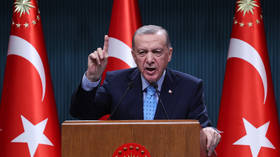Neoconservatism: Where Trotsky Meets Stalin and Hitler
One of the best articles on the neocons I have seen to date.
By Srdja Trifkovic
Chronicles
Eleven years ago I wrote a column for the print edition of Chronicles under this title. Tom Piatak’s grim reminder of the continued destructive presence of this cabal in what passes for the commentariat in today’s America has prompted me to dig into my old files and recap for our readers the historical and ideological roots of neoconservatism. The 2004 diagnosis, reproduced here in an abbreviated form, still stands.
The neoconservatives are often depicted as former Trotskyites who have morphed into a new, closely related life form. It is pointed out that many early neocons—including The Public Interest founder Irving Kristol and coeditor Nathan Glazer, Sidney Hook, and Albert Wohlstetter—belonged to the anti-Stalinist far left in the late 1930s and early 1940s, and that their successors, including Joshua Muravchik and Carl Gershman, came to neoconservatism through the Socialist Party at a time when it was Trotskyite in outlook and politics. As early as 1963 Richard Hofstadter commented on the progression of many ex-Communists from the paranoid left to the paranoid right, clinging all the while to the fundamentally Manichean psychology that underlies both. [Half a century] later the dominant strain of neoconservatism is declared to be a mixture of geopolitical militarism and “inverted socialist internationalism.”
Blanket depictions of neoconservatives as redesigned Trotskyites need to be corrected in favor of a more nuanced analysis. In several important respects the neoconservative world outlook has diverged from the Trotskyite one and acquired some striking similarities with Stalinism and German National Socialism. Today’s neoconservatives share with Stalin and Hitler an ideology of nationalist socialism and internationalist imperialism. The similarities deserve closer scrutiny and may contribute to a better understanding of the most influential group in the U.S. foreign policy-making community.



